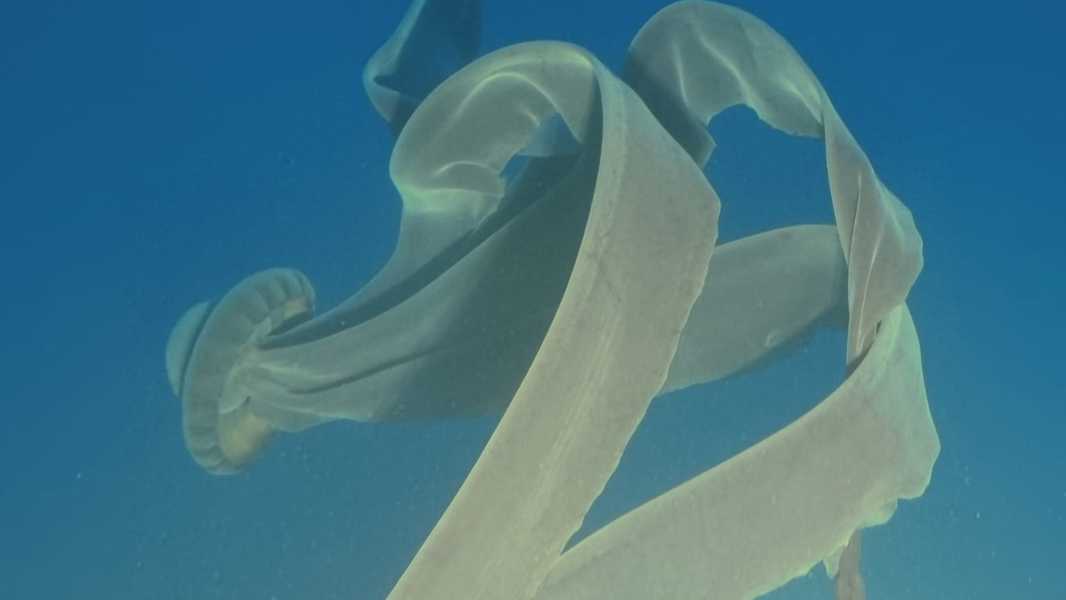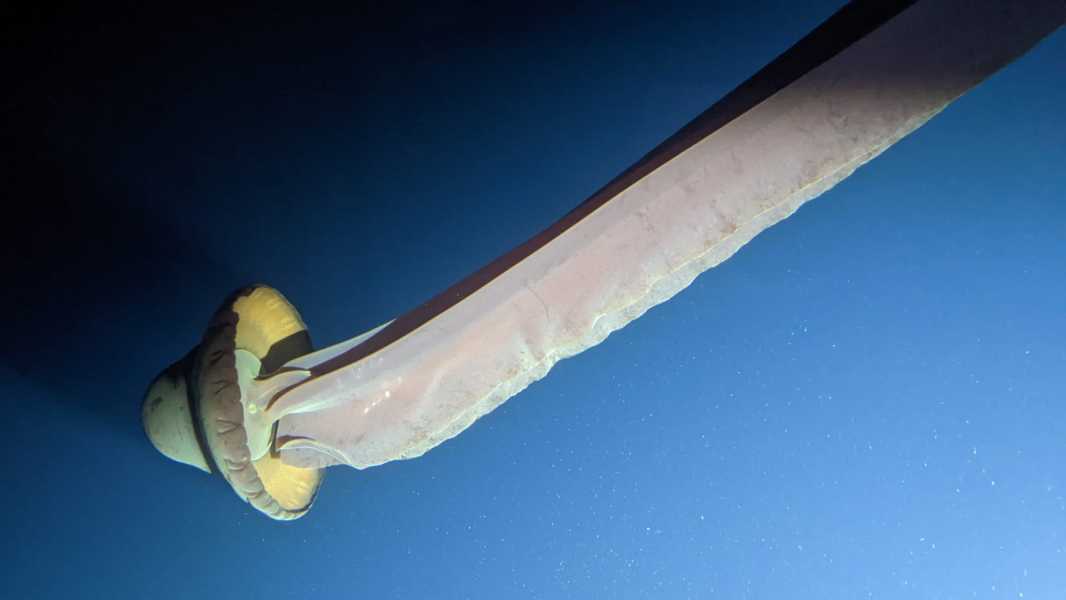
A giant ghost jellyfish (Stygiomedusa gigantea) was discovered off the coast of the Antarctic Peninsula during a Viking cruise.
Cruise ship passengers spotting unusual creatures off the coast of Antarctica have reported rare sightings of giant ghost jellyfish – deep-sea creatures that resemble UFOs with thick tentacles streaming from their undersides, according to a new study.
A giant ghost jellyfish (Stygiomedusa gigantea), one of the largest invertebrate predators of the deep sea, greeted travelers during their trip in a submersible launched by cruise line operator Viking in early 2022. Researchers estimated the jellyfish to be more than 16 feet (5 meters) long, with one measuring at least 33 feet (10 meters) in length, according to a paper published Jan. 30 in the journal Polar Research.
The study's first author, Daniel Moore, realized that the guests had encountered a giant phantom when he saw it on one of the participants' cameras. “I recognized it immediately and, given the rarity of such sightings, was filled with excitement,” Moore, one of Viking's lead scientists, told Live Science in an email.

Viking team discovers second giant ghost jellyfish.
Giant ghost jellyfish are found in every ocean except the Arctic Ocean. However, because these mysterious organisms are usually found at great depths, they are rarely seen by humans. A new study describes first-hand observations of three different jellyfish during submarine dives off the coast of the Antarctic Peninsula.
“Each time we spotted them, the jellyfish seemed to be swimming slowly, gently pulsating its bell to move,” Moore said. “They didn't seem to be interested in the lights of the submersible or our presence.”
The jellyfish have been spotted at depths of 260 feet (80 m), 285 feet (87 m), and 920 feet (280 m). Giant phantom jellyfish are mostly found at depths below 3,280 feet (1,000 m), but they can also be found at shallower depths in the Southern Ocean or Antarctic Ocean. The reason for their presence in the relatively shallow waters around Antarctica remains unknown.
Moore noted that one possible reason could be that the jellyfish are rising higher to be exposed to ultraviolet radiation, which would help flush out the parasites. Another hypothesis, suggested by Moore, is that the rising deep waters found around the Antarctic continent are simply bringing them to the surface. Moore hopes that their observations will lead to a better understanding of the giant phantom jellyfish.
Sourse: www.livescience.com





